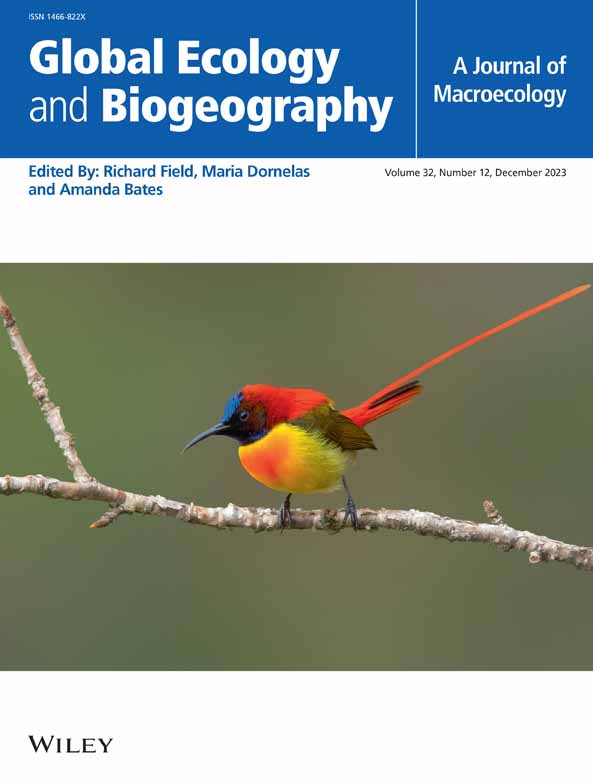Morphological Limitations Imposed on Lizards Facing Urbanisation
Abstract
Aim
Habitat conversion, in general, and urbanisation, in particular, are thought to create ecological filters that eliminate some species while simultaneously replacing them with others that thrive under novel conditions. The specific nature of these filters is unclear, but morphology may play an important role. Here, we seek to assess which lizard morphologies are favoured in urban habitats.
Location
Continental United States.
Time Period
2010–2018.
Major Taxa Studied
Lizards.
Methods
We correlate 17 linear measurements of morphology from museum specimens with the relative incidence of observations in urban versus non-urban habitats from the citizen science database iNaturalist to determine whether particular morphologies predispose species to tolerate urban environments. We then use functional diversity and morphospace volume metrics to quantify the total amount of unique morphological diversity represented by urban tolerant species, versus those more restricted to natural areas.
Results
Morphological limitations are filtering lizard species from urban environments. Specifically, species with longer tails, larger and/or narrower heads, and shorter limbs relative to their body size were more likely to occupy urban zones. As a result of this filtering, there was substantially diminished morphological diversity among urban-tolerant species. While natural habitat-restricted species had a large amount of morphological diversity that was unrepresented in urban-tolerant species, most urban species' morphologies were shared by species restricted to natural areas.
Main Conclusions
Only a small subset of morphologies found in natural environments persists in urban ones, but urban lizards do possess a small number of unique morphological features that may facilitate their success. Strong ecological filters in evolutionarily novel environments are not only diminishing species diversity but pruning phenotypic diversity to favour a much smaller subset of functional possibilities. Due to the connection between phenotype and function, such diminished morphological diversity is likely to impact ecosystem functioning in impoverished human-modified systems.


 求助内容:
求助内容: 应助结果提醒方式:
应助结果提醒方式:


